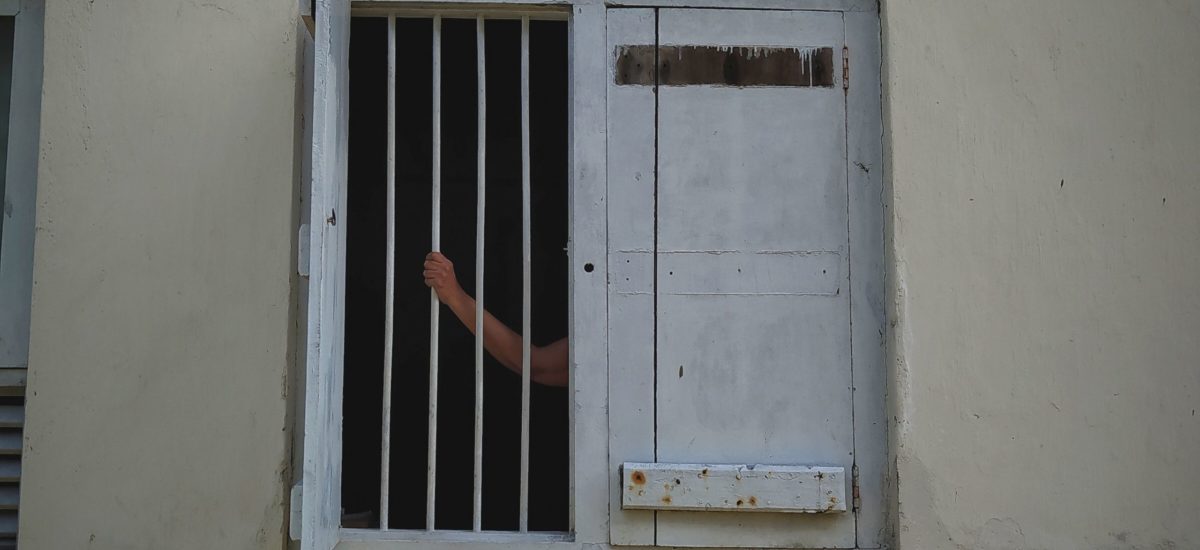A global rise in the cases of domestic violence (DV) has been observed during the COVID-19 pandemic and sustained periods of lockdown owing to the pandemic. Several factors including tension created by prolonged seclusion, socio-economic instability and hardship have led to an increase in DV. Locally, this dangerous trend has been exacerbated by the opening of bars and taverns after a long period of closure in the past week; women’s rights organizations and activists have observed that the perpetrator’s access to alcoholic substances, which is often cited as a precursor to abusive behaviour, has led to a major spike in cases of DV in many parts of the country. The rise in cases has also brought a heightened demand for safe homes and shelters since the existing resources are not sufficient to cater to the current needs. Other factors such as the victim’s inability to access law enforcement bodies and delays in the criminal justice system owing to the pandemic coupled with pre-existing social stigma has also led to perpetrators enjoying widespread impunity.
DV is a hidden practice with incidence underreported and perpetrators under penalised. The patriarchal values of society condemn violence in general but sometimes condone it, especially when it concerns the family unit. DV is not confined to violence against women but there is a disproportionate number of women who are affected due to the power imbalance, abuse of power, lack of access to justice and the failure of the system caused by the pandemic. Furthermore, working remotely or being confined to one’s home and not being able to socialise during these times has prevented the victim from reaching out to the nearest police station, neighbours, relatives or colleagues for immediate help.
Almost one third (30%) of women in the world have experienced some form of physical and/or sexual violence by their intimate partner in their lifetime and as many as 38% of murders of women are committed by a male intimate partners. In Sri Lanka, one in five women have faced violence by an intimate partner and are more than twice as likely to have experienced physical violence by a partner rather than by a non-partner according to the Women’s Wellbeing survey conducted by the department of Census and Statistics in 2019. Unfortunately, only 13% of the victims complained and only 7% of perpetrators had experienced legal consequences. Sadly, over 70% of the perpetrators stated that they experienced no consequences at all and most men said that the sexual violence was motivated by a notion of sexual entitlement.
The law
The Prevention of Domestic Violence Act 2005 was enacted to safeguard the rights of women in domestic circumstances and to protect them from abusive behaviour within the home. The incorporation of DV into legislation was a victory gained by the women’s movement in a long struggle to address the issue and is a key milestone in women’s engagement with the law. The Act covers both physical violence and emotional abuse and allows any person who suffers or is likely to suffer domestic violence to seek a protection order from a Magistrate’s Court, which can bar the aggressor from committing further acts of violence as well as make a number of other prohibitions. Failure to comply with the protection order is an offence punishable with a fine or imprisonment.
Why women don’t seek help
Even with the existence of the Act women are reluctant to seek assistance for different reasons, one of which is the fear of repercussions – this could involve worrying about social stigma or that things will be made worse by lodging a complaint. This is especially problematic when the victim is financially dependent on the perpetrator of the abuse. It dissuades the victim from seeking out help from external sources through fear of financial stability. Victim-blaming is a rampant phenomenon that has to take almost as much blame for the abuse of women as violence itself. When abused, it is common for the victim to be shamed by those around them, which may evolve into self-blame.
Another major obstacle has been that law enforcement authorities and the criminal justice system are not receptive to the complaints made and do not create a conducive enough environment to facilitate complaints. It’s a common occurrence where perpetrators of abuse use their political affiliations or contacts within law enforcement authorities to prevent justice from being served or prevent victims from accessing justice. Victims of DV also face discrimination and mistreatment from law enforcement authorities. In a society steeped in the ‘culture’ and ‘tradition’, DV is considered a ‘domestic issue’ by certain law enforcement personnel, who then refuse to interfere and tell the victim to go back to her husband. Refusing to believe the victim’s story, blaming the victim for being abused and complaining about the victim not reporting the incident earlier are forms of such mistreatment. Given the power dynamic between the law enforcement personnel and the victim, it isn’t uncommon for actors of the state who are meant to be aiding the victim and creating a safe space to demand sexual favours from victims in order for them to take the victim’s case seriously, leading to them being re-victimised. This sort of callous and predatory behaviour prevents victims from reporting abuse, leading to them remaining in abusive households or even losing their lives in the worst of cases.
With the usual delays in court worsened by the pandemic, legal costs have been made further unaffordable. Legal actors including lawyers and judges sometimes lack the requisite training and situational awareness to engage with the victim, further victimising them. Thus, the support for women to take action against DV is once again low.
There is also a lack of safe homes and shelters for victims of DV seeking refuge from their violent partner. The increased prevalence of DV during the pandemic has meant that the limited number of women’s safe shelters have reached capacity and it is concerning to note the lack of safe homes for women who are subjected to abuse in the country’s its most rural areas including in places such as Anuradhapura and Monaragala. While unused public buildings could potentially be used to accommodate victims in the short term, it is imperative that a robust long term policy backed mechanism be operationalised to place victim survivors in safe homes and implement a subsequent mechanism to direct them into permanent safe spaces or gainful employment is vital to combating the issue.
Given the above factors, it is unsurprising yet disheartening to note that only 1% of victims use the Prevention of Domestic Violence Act to obtain redress.
Improving the system
Although the work that has been done with regard to raising awareness concerning DV and encouraging victims to come forward has been commendable, much more needs to be done both by the government and civil society organizations to raise consciousness relating to this law within society and law enforcement agencies.
It is vital that legal and policy reforms are brought forth to make the criminal justice system more victim centric, one which focuses on privacy and methods to reduce trauma, incorporates psychological support for victims and implements an effective victim and witness protection mechanism. In this regard, a special family court or a special division of the magistrate or district court presided by a judge with considerable experience in matrimonial laws, who will be sensitive to gender issues will be a useful addition to the courts system. It is important for legal actors not to adopt an adversarial method in court when dealing with DV especially when children are involved and they should ensure that the child’s rights are not violated during the process.
The government’s efforts to combat DV should be two folds; there must be primary structures in place to see a swift justice and ensure the safety of victims of abuse, coupled with policy reform aimed at reducing the rates of incidence of DV. It is vital that these structures remain operational as essential services during periods of lockdown. These policy priorities should be realigned, having examined the factors that lead to the high rates of DV from misogynist and patriarchal mindsets prevalent in society to the lack of understanding and respect for bodily autonomy. The health sector can also play a key role in addressing DV through early identification, care and referrals to appropriate support services in the community. Therefore, laws and public policies that are multidisciplinary must include the participation of multiple sectors, including health care services.
No law can prevent people from behaving violently. The best that the state can do is to render a fair hearing that would attempt to minimise the harm to the affected parties and create an environment in which women feel safe and respected.
Helplines
It’s understandably difficult for people who have been abused to see that there are channels through which they could receive justice and that is why there have been several impactful initiatives launched to educate the general public on their rights as citizens and how the legal system can help abuse victims.
Government and non-government organizations have set up several helplines with the specific goal of aiding victims of abuse. Since the COVID-19 outbreak, there has been a surge in the number of DV cases being reported to the 1938 National 24-hour Helpline for Women and to the Women In Need (WIN) helpline.
WIN is an organization dedicated to informing women of their rights, providing free legal advice and free counselling. They also launched the 2six4 app to assist victims to instantly alert selected contacts on their phones in an emergency situation. The app will also connect the user to the nearest police station or hospital with the press of a button. The user can access information regarding laws in place against abuse via the app as well.
The Yeheliya Foundation works with disadvantaged girls and women to help them to improve their lives.
The goal of these initiatives is to ensure a safer environment for women to live by preventing abusers from getting away with their crimes, thereby dissuading those with similar intentions. As more initiatives are launched to support victims of abuse and as more women receive platforms to voice their issues, it’s becoming harder for abusers to escape prosecution. With citizens taking more proactive stances and proper education on the subject, it may be possible to reduce the number of victims drastically and make Sri Lanka a safer, more cohesive society to live in.
The Yeheliya Foundation urged survivors of DV to access available assistance and requested people not to blame victims or force them to stay in abusive relationships but to lead them to places of help and go with them to the police station to file the complaint and accompany them to court for moral support.
Women deserve to be treated as equals. Policies can only do that much, thus a new way of thinking is essential to root out the invisible power of deeply internalised beliefs. We must find new ways to approach and eliminate the harmful ideas that have led to gender inequality as when half of humanity does not have the opportunities and freedoms of the other halves, all of society loses.
For a more detailed description of the Prevention of Domestic Violence Act and helplines, please access the trilingual Google document prepared by the Yeheliya Foundation here: https://docs.google.com/document/d/17rKAmpSnSHR_CK8Ai5Knppo-fYievw_Vi8XW2uMMyzQ/edit
Chamathka Ratnayake and Tarangee Mutucumarana are Directors of the Yeheliya Foundation
View this post on Instagram


